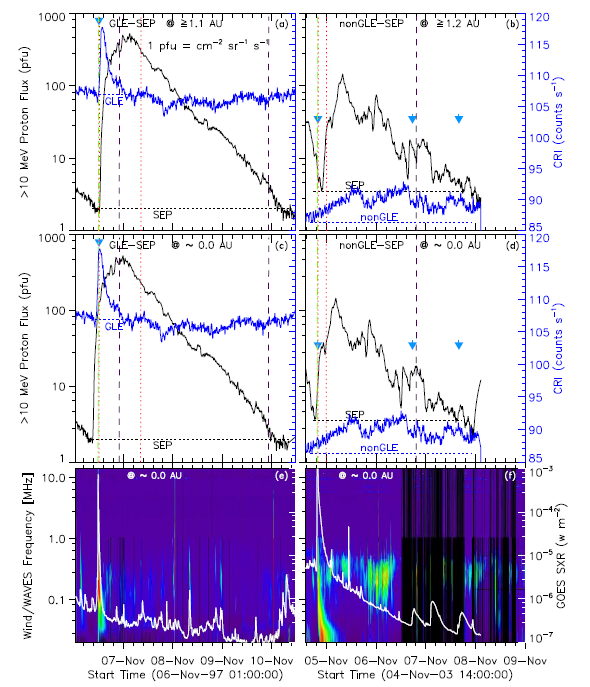Long ago a few researchers reported that there was a close relation between high-energy particles and white-light flares. Although some researchers later reported that CME-related large-scale interplanetary-shocks could accelerate particles at significant distances from the Sun, it ultimately indicated that the particles were primarily accelerated by the flares.
Thus, it was almost recognized that flares are the principal accelerators for high-energy particles. However, contemporarily several researchers argued that the particles can be accelerated by CME-driven shock rather than in the flare site. The argument was challenged by a few researchers who argued that if the protons are accelerated by the CME-driven shocks then the protons are supposed to derive the energies from the CMEs, and as the CMEs traditionally develop on much wider scales, they allow more free energy than flaring active regions.
It interpreted that the characteristics of the observed protons are inconsistent with CME-shock acceleration, and the energy must be an integral part of the flare. Thus, several findings reiterate that flare is the main acceleration process for GLEs. However, the question still arising is whether the protons are accelerated to relativistic energies directly during flare energy-release or later when the shock propagates in the upper corona.
It is natural that particles reach the Earth through Parker spiral interplanetary magnetic field lines (≥ ~1.2 AU) while electromagnetic radiation components of the acceleration processes (flares; CME-shocks) reach the Earth straightly (~1.0 AU). Therefore, the observers will detect the particles with a time-delay (e.g. see Fig ). Therefore, direct study of GLE dynamics on the Earth or near-Earth’s space cannot specify whether flare or CME plays the main role in accelerating the MeV particles to GeV energetic.

